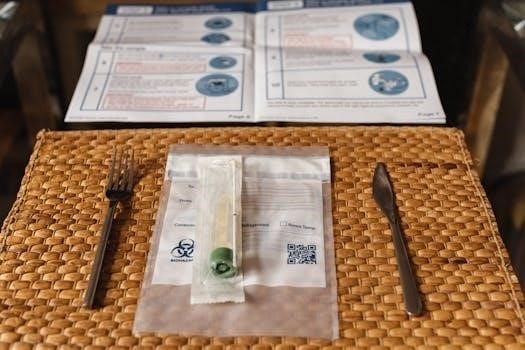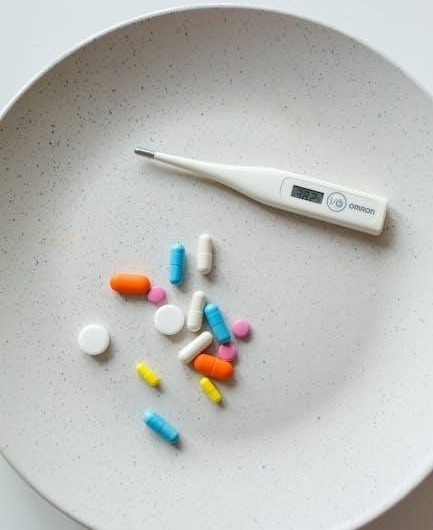
Pari Vios Nebulizer Instructions⁚ A Comprehensive Guide
Welcome to a detailed guide for the Pari Vios Nebulizer! This resource offers comprehensive instructions for optimal use, care, and troubleshooting. Follow along for effective respiratory therapy.
The Pari Vios nebulizer, inspired by the Latin word suggesting “life” or “vitality,” is a compressor-based system designed for effective aerosol medication delivery. It pairs a robust Vios compressor with a Pari nebulizer, ensuring consistent performance. This combination is suited for administering medication directly to the lungs, aiding in managing respiratory conditions such as asthma, COPD, and bronchitis. The Pari Vios is designed for ease of use and reliability, suitable for both pediatric and adult patients. Understanding its operation and maintenance is crucial for maximizing its benefits. This guide will provide detailed instructions on how to set up, use, clean, and troubleshoot the Pari Vios nebulizer, ensuring you can confidently manage your respiratory health. The device is intended for individual use and should not be shared.
Key Features and Benefits of the Pari Vios
The Pari Vios nebulizer system boasts several key features that make it a reliable choice for respiratory therapy. Its compressor is designed for consistent and efficient aerosol delivery, ensuring medication reaches the lungs effectively. One of the primary benefits is its ability to administer a wide range of medications, making it versatile for various respiratory conditions, including asthma and COPD. The Vios compressor is known for its quiet operation, which minimizes disruption during treatments, especially beneficial for children. Additionally, the system includes the Pari LC Sprint nebulizer, designed to deliver medication quickly and efficiently, reducing treatment time. The device disassembles easily for cleaning and maintenance, promoting hygiene and prolonging its lifespan. The Pari Vios is a compact and lightweight system, making it easy to store and transport. It delivers small aerosolized medication particles directly into the lungs.

Setting Up the Pari Vios Nebulizer
Proper setup is essential for effective treatment. This section guides you through unboxing, component identification, and assembly, ensuring your Pari Vios nebulizer is ready for use.
Unboxing and Identifying Components
Upon opening your Pari Vios Nebulizer box, carefully remove all the components. Typically, you will find the Vios compressor, a PARI nebulizer (either the LC Sprint or LC Plus model), tubing, a mouthpiece, and possibly a mask for pediatric or adult use.
Consult your instruction manual to verify all parts are present. The compressor is the main unit that drives the nebulizer. The nebulizer cup holds the medication. The tubing connects these two, delivering air to aerosolize the medicine.
Examine each component for any damage sustained during shipping. Familiarize yourself with each part before assembly. This includes noting the inspiratory valve cap on the nebulizer. Correctly identifying each component will streamline the assembly and usage process. If anything is missing, contact the supplier.
Understanding each part ensures safe and effective nebulizer operation. Keep the box and packing materials for potential storage or warranty purposes.
Assembling the Nebulizer System
Begin by placing the Vios compressor on a stable, flat surface. Ensure the power switch is in the “off” position. Take the tubing and firmly attach one end to the compressor’s air outlet.
Next, connect the other end of the tubing to the bottom of the PARI nebulizer cup. Make sure the connection is secure to prevent air leaks during operation. Open the inspiratory valve cap of the nebulizer by lifting the cap.
If using a mouthpiece, attach it to the top of the nebulizer. Alternatively, if a mask is needed (especially for young children), securely connect the mask to the nebulizer top.
Double-check all connections before proceeding. A properly assembled system is crucial for efficient medication delivery. Refer to the instruction manual for visual aids if needed. Ensure all parts fit snugly and there are no visible cracks or damage.
This careful assembly prepares your Pari Vios nebulizer for immediate use. Now you are ready to add medication.

Using the Pari Vios Nebulizer
This section guides you through preparing medication and performing a successful nebulizer treatment. Proper usage ensures effective delivery and maximizes therapeutic benefits, for improved respiratory health.
Preparing the Medication
Before starting your nebulizer treatment with the Pari Vios, proper medication preparation is crucial. Always consult your healthcare provider or pharmacist for the correct medication type and dosage. Ensure the medication is intended for nebulization and compatible with the Pari Vios system.
Begin by washing your hands thoroughly with soap and water to prevent contamination. Open the medication vial carefully, following the manufacturer’s instructions. Using a sterile syringe, draw up the prescribed amount of medication.
Next, open the inspiratory valve cap of the nebulizer cup by gently lifting it (as shown in Figure C, if available in your manual). Pour the medication into the nebulizer cup, being careful not to overfill it. Never exceed the maximum fill line indicated on the cup.
If you are using a pre-mixed medication vial, simply pour the entire contents into the nebulizer cup. Ensure no medication spills during the process. Once the medication is in the cup, securely close the inspiratory valve cap. Your Pari Vios nebulizer is now ready for use.
Performing a Nebulizer Treatment
Now that your Pari Vios nebulizer is assembled and the medication is prepared, it’s time to begin your treatment. First, connect the nebulizer cup to the compressor using the provided tubing, ensuring a secure fit on both ends. Power on the Vios compressor.
Next, attach the appropriate mouthpiece or mask to the nebulizer cup. For adults and older children, a mouthpiece is generally preferred. For younger children or those who have difficulty using a mouthpiece, a mask designed for nebulizer treatments is recommended.
Sit in a comfortable, upright position. Place the mouthpiece in your mouth, ensuring your lips form a tight seal around it. If using a mask, position it comfortably and securely over your nose and mouth.
Breathe normally through your mouth. Continue the treatment until the medication is fully nebulized. The treatment duration depends on the medication volume. Once sputtering begins, indicating the medication is nearly finished, gently tap the nebulizer cup to ensure the remaining medication is nebulized. Turn off the compressor and detach the nebulizer.
Cleaning and Maintenance
Proper cleaning and maintenance are crucial for the Pari Vios nebulizer’s performance and longevity. Regular cleaning prevents contamination and ensures effective medication delivery during each treatment session.
Daily Cleaning Procedures
To ensure your Pari Vios nebulizer functions optimally and remains hygienic, daily cleaning is essential. After each use, disassemble the nebulizer cup, including the top and bottom pieces, and thoroughly rinse all components under warm, running tap water. Gently shake off excess water.
Wash all parts with mild liquid dish soap and rinse again under warm, running water for at least one minute. Allow the components to air dry completely on a clean paper towel or drying rack. Ensure all parts are fully dry before reassembling for the next treatment.
The compressor unit should be wiped down with a damp cloth as needed to remove any dust or debris. Never submerge the compressor in water or any other liquid. Following these daily cleaning steps will help maintain the efficiency and cleanliness of your Pari Vios nebulizer.
Disinfection Guidelines
To prevent the growth of bacteria and ensure optimal hygiene, regular disinfection of your Pari Vios nebulizer is crucial. It is recommended to disinfect the nebulizer components at least once a week, or more frequently if you are ill. Disassemble the nebulizer cup, including the top and bottom pieces.
You can disinfect the parts by boiling them in water for five minutes. Alternatively, you can soak the components in a solution of one part white vinegar and three parts hot water for 30 minutes. After disinfecting, rinse all parts thoroughly under warm, running water. Allow the components to air dry completely on a clean surface before reassembling.
Always follow the manufacturer’s instructions for disinfection. Ensure all parts are completely dry to prevent any moisture buildup, which could promote bacterial growth. Proper disinfection will help maintain the effectiveness and safety of your Pari Vios nebulizer.

Troubleshooting Common Issues
Experiencing problems with your Pari Vios? This section provides guidance on troubleshooting common issues, such as nebulization problems and compressor malfunctions, ensuring a smooth and effective treatment process.
Addressing Nebulization Problems
If your Pari Vios nebulizer isn’t producing a consistent mist, several factors could be at play. First, ensure the medication cup is filled to the appropriate level, avoiding overfilling or underfilling, as incorrect levels can disrupt nebulization.
Next, check the nebulizer’s inspiratory valve cap, ensuring it’s correctly positioned and free from obstructions. An improperly sealed or blocked valve can impede airflow and reduce mist production.
Also, inspect the tubing connecting the compressor to the nebulizer cup for any kinks, cracks, or disconnections. A compromised tube can leak air, diminishing the compressor’s ability to generate adequate pressure.
Confirm that all components are correctly assembled according to the instructions. If issues persist, verify the air filter on the compressor is clean; a clogged filter restricts airflow. By addressing these key areas, you can often resolve nebulization problems and restore optimal performance.
Resolving Compressor Malfunctions
If your Pari Vios compressor isn’t functioning correctly, begin by confirming it’s properly plugged into a working electrical outlet. Check the power cord for damage, and ensure the outlet is supplying power by testing it with another device.
If the compressor turns on but doesn’t produce adequate airflow, inspect the air filter. A dirty or clogged filter restricts airflow, hindering the compressor’s performance. Clean or replace the filter according to the maintenance instructions.
Overheating can also cause malfunctions. Ensure the compressor is placed on a hard, flat surface with adequate ventilation to prevent overheating during use. If the compressor shuts off unexpectedly, allow it to cool down before attempting to restart it.
If these steps don’t resolve the issue, the compressor may have an internal problem requiring professional repair or replacement. Contact Pari’s customer service or a qualified technician for further assistance and avoid disassembling the unit yourself.

Where to Find Additional Information
For more detailed guidance, consult the Pari Vios Nebulizer’s official website and instruction manual. These resources offer comprehensive instructions, troubleshooting tips, and contact information for support.
Pari Vios Nebulizer Instruction Manual
The Pari Vios Nebulizer instruction manual is an indispensable resource for users seeking detailed guidance on the proper operation, maintenance, and troubleshooting of their device. This comprehensive manual provides step-by-step instructions, diagrams, and illustrations to ensure safe and effective nebulizer treatments.
Within the manual, you will find essential information on assembling the nebulizer components, preparing medication, performing treatments, and adhering to cleaning and disinfection protocols. The manual also covers troubleshooting common issues, such as addressing nebulization problems and resolving compressor malfunctions. It emphasizes the importance of regular maintenance to prolong the lifespan of the device and maintain optimal performance.
Furthermore, the Pari Vios Nebulizer instruction manual includes safety precautions and warnings to minimize the risk of injury or damage. It serves as a valuable reference tool for both new and experienced users, promoting consistent and effective respiratory therapy.
 instructions for mobi thermometer
instructions for mobi thermometer  instructions for form 8867
instructions for form 8867  instructions for telestrations
instructions for telestrations  form 592 instructions
form 592 instructions  valentía 2 libro pdf descargar gratis
valentía 2 libro pdf descargar gratis  scag freedom z owners manual
scag freedom z owners manual  guiding light alan spaulding
guiding light alan spaulding